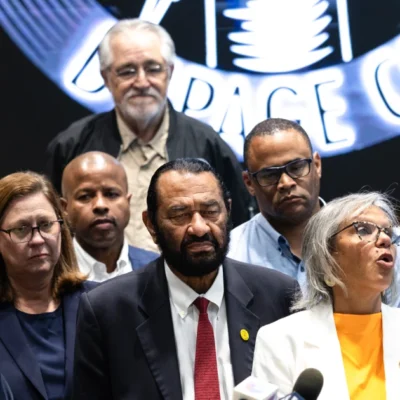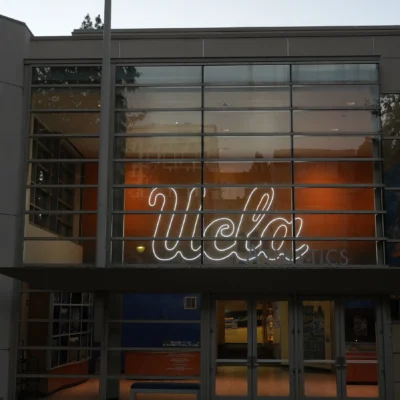Former President Barack Obama has sharply criticized the Texas GOP redistricting plan, calling it a deliberate power grab that threatens the core values of American democracy. In a recent statement, Obama expressed deep concern over what he described as a partisan effort to manipulate electoral boundaries in favor of Republican lawmakers—undermining the principle of fair representation.
His remarks have reignited a national conversation about redistricting, gerrymandering, and the ongoing struggle to protect voting rights in the United States.
What Is the Texas GOP Redistricting Plan?
Redistricting is the process of redrawing the boundaries of electoral districts every ten years following the U.S. Census. It is meant to ensure fair and equal representation as populations shift and grow. However, it often becomes a political tool used by parties in power to redraw districts in a way that benefits their own electoral chances—this is known as gerrymandering.
In Texas, the Republican-controlled legislature has released a redistricting map that critics say is heavily skewed to maintain GOP dominance, even as the state’s demographics become increasingly diverse. The new maps reduce the electoral influence of communities of color, especially Latinos and African Americans, who have accounted for nearly all of the state’s population growth over the last decade.
Obama Speaks Out: “This Undermines Our Democracy”
In a strongly worded statement, Obama said:
“The Texas GOP redistricting plan is a power grab, plain and simple. It undermines our democracy by silencing the voices of the very communities that have fueled Texas’s growth.”
He went on to say that such actions erode public trust in the political process and discourage voter participation, especially among young and minority voters.
Obama’s comments reflect growing national frustration with partisan redistricting efforts. Voting rights advocates argue that these practices amount to voter suppression in disguise.
A Shift in Texas—But Not on the Map
Over the past decade, Texas has seen rapid demographic changes:
- Over 95% of the state’s population growth came from communities of color.
- The Latino population now rivals the white population in size.
- Urban areas and suburbs have become increasingly diverse and Democratic-leaning.
Despite this shift, the proposed redistricting maps from Texas Republicans maintain or even strengthen GOP control in many districts. This has led to allegations that the new districts dilute minority voting strength by either:
- Packing minorities into a few districts, so their influence is limited to those areas.
- Cracking communities of color across multiple districts, so they cannot form a majority in any one district.
Civil rights groups and Democratic leaders have already begun to file lawsuits against the plan, arguing it violates the Voting Rights Act by minimizing the electoral power of minority communities.
The Legal and Political Fallout
The redistricting plan has triggered a wave of legal challenges. Organizations such as the NAACP, MALDEF (Mexican American Legal Defense and Educational Fund), and the League of Women Voters argue that the maps are discriminatory and unconstitutional.
Here’s what may happen next:
- Federal Lawsuits: Multiple civil rights groups are seeking injunctions to block the implementation of the maps before the next election.
- DOJ Involvement: The U.S. Department of Justice may step in to challenge the maps under the Voting Rights Act.
- Supreme Court Showdown: With recent precedent set by the Court to limit its intervention in redistricting disputes, the path to justice may be uncertain.
At the state level, Democratic lawmakers in Texas have vowed to fight back, though their influence is limited due to GOP control of the state legislature.
Obama’s Broader Call for Voting Reform

Obama’s criticism of the Texas GOP redistricting plan is not just about one state—it’s part of a broader call to protect voting rights across the country.
He and other Democratic leaders have pushed for:
- The John R. Lewis Voting Rights Advancement Act – to restore provisions of the Voting Rights Act that were weakened by the Supreme Court in recent years.
- The Freedom to Vote Act – a federal bill that would ban partisan gerrymandering, make Election Day a national holiday, and protect against voter suppression.
Both bills have faced strong opposition from Senate Republicans, and attempts to pass them have been stalled in Congress.
Obama has urged Americans to stay engaged:
“We cannot afford to stay silent while the foundations of our democracy are being chipped away. This is about who gets heard, who gets counted, and who has power.”
Texas Republicans Defend the Plan
In response to the criticism, Texas Republicans have defended their redistricting efforts. They argue that the maps are legal, reflect the data from the 2020 Census, and are designed to maintain community representation.
Texas Senator Joan Huffman, who led the redistricting effort, stated:
“We followed all legal guidelines and drew maps that fairly reflect the will of the voters.”
Republican leaders claim that race was not the primary factor in drawing the maps, but opponents argue that the results clearly show otherwise.
National Implications of the Redistricting Fight
The battle over Texas’s redistricting is not just a state issue—it has national consequences. Texas is the second most populous state in the U.S. and gained two additional congressional seats due to population growth.
How these districts are drawn will influence:
- The balance of power in the U.S. House of Representatives
- Future presidential elections
- The national conversation about race, representation, and democracy
Redistricting battles are happening in many other states as well, with both parties attempting to secure long-term advantages through the redrawing of district lines.
What This Means for Voters
If the Texas GOP redistricting plan moves forward as proposed, millions of voters—especially people of color—may find their electoral influence diminished. This can lead to:
- Less competitive elections
- Lower voter turnout
- Increased public disillusionment with politics
Voting rights advocates urge citizens to:
- Stay informed about how redistricting affects their district
- Support national voting rights legislation
- Pressure local leaders to ensure fair representation
A Test for American Democracy
At its heart, this controversy is about something much bigger than maps—it’s about the health of American democracy. When elected officials draw districts that guarantee their own reelection and silence opposing voices, it raises fundamental questions:
- Who gets to choose elected leaders—the voters or the politicians?
- Can democracy function when representation does not reflect population diversity?
- What role should federal law play in protecting voting rights at the state level?
Obama’s remarks tap into these deeper concerns. His warning that the Texas GOP redistricting plan “undermines our democracy” is not just political rhetoric—it’s a wake-up call.
Conclusion: The Road Ahead
As legal challenges move forward and public pressure mounts, the future of Texas’s new districts remains uncertain. What is clear, however, is that the fight for fair representation is far from over.
Whether or not you agree with President Obama, the facts are undeniable:
- Texas is growing and changing.
- Communities of color are driving that change.
- Yet the political system is being reshaped in a way that may lock them out of power.
That’s why the debate over the Texas GOP redistricting plan matters—not just for Texans, but for anyone who cares about the future of democracy in America.
Do Follow USA Glory On Instagram
Read Next – Congressman Sex Tape Threat: Ex-Girlfriend Speaks Out






